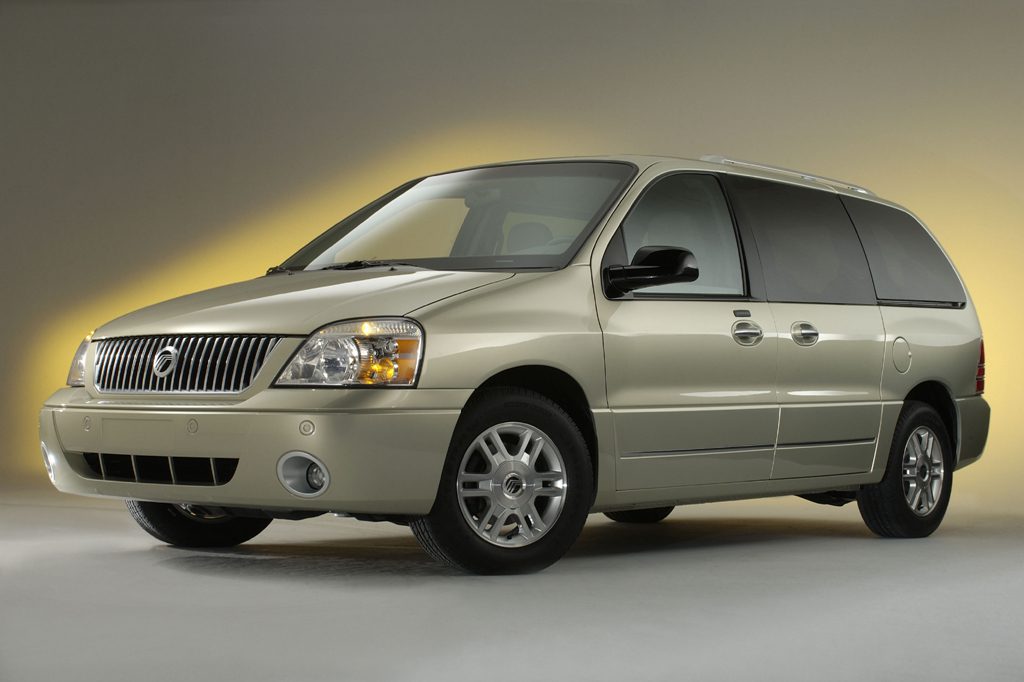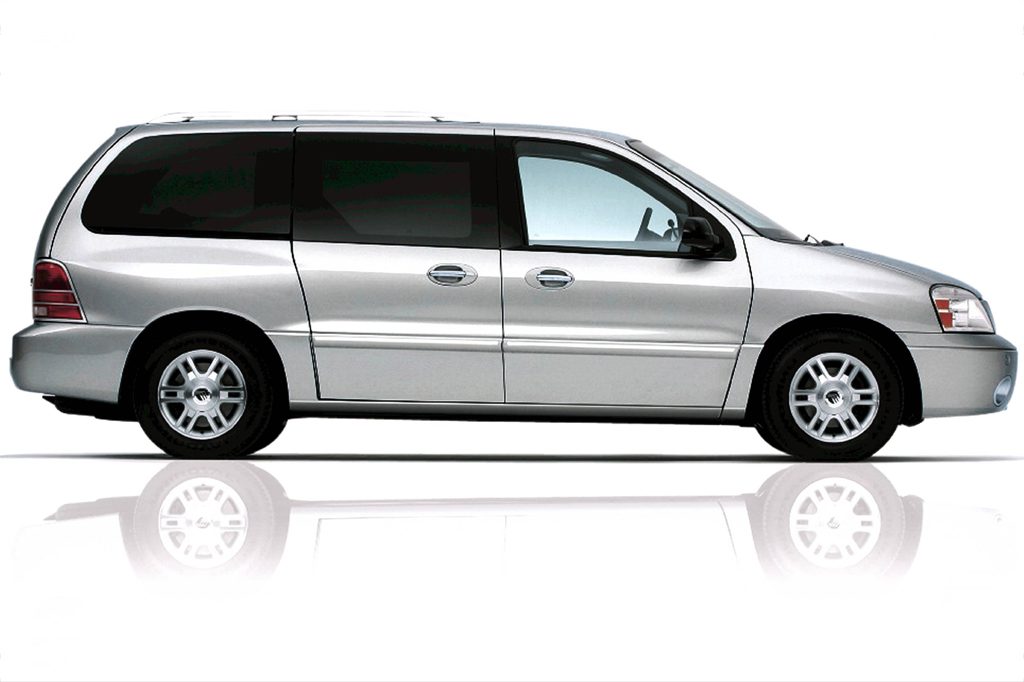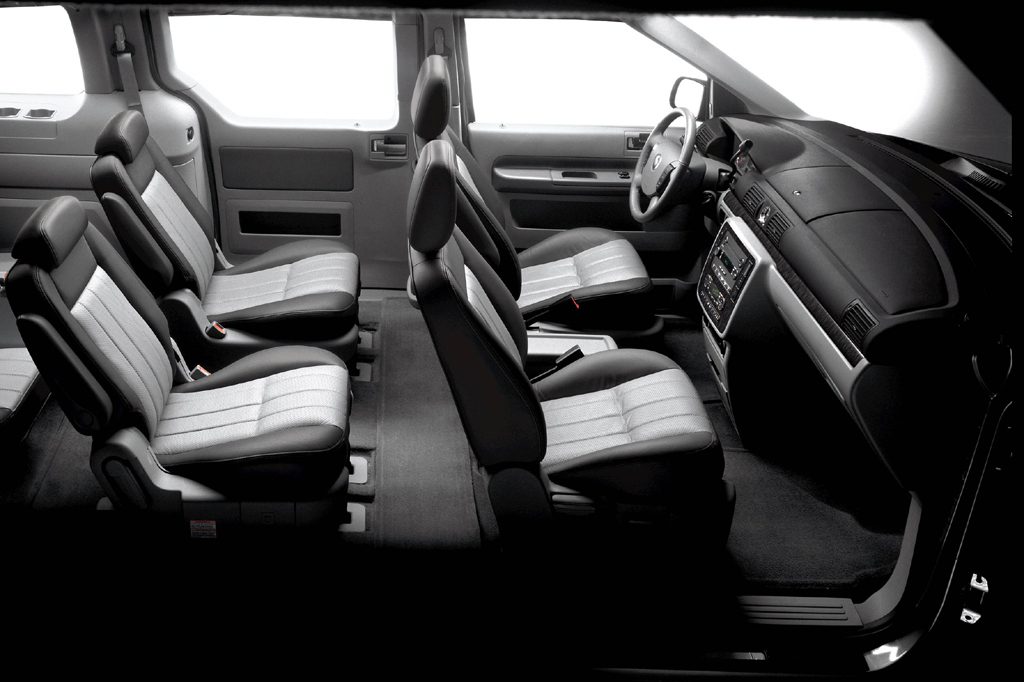| Minivan; Built in USA |
|
|
| Good condition price range: $4,500 – $9,000* |

2004 Mercury Monterey

2005 Mercury Monterey

2005 Mercury Monterey
| Pros: |
|
| Cons: |
|
Monterey, like Freestar, offers laudable safety features, but is otherwise outclassed by newer-design rivals. In particular, contemporary Dodge Caravans, Honda Odysseys and Toyota Siennas all offer better performance, road manners, refinement, and workmanship. That’s why they were far more popular as new vehicles, and will be easier to find used. On the other hand, poor original sales generally mean lower secondhand prices, so a Monterey (or Freestar) would be a decent budget buy if you don’t mind its shortcomings.
Overview
After a one-year hiatus, Mercury returned to the minivan field with the 2004 Monterey, basically an upscale version of that year’s newly named Ford Freestar. Both shared a basic design evolved from the 1999-2003 Ford Windstar minivan. Monterey differed from Freestar only in styling details, equipment and pricing. Mercury offered three trim levels instead of Ford’s five: base Convenience, midline Luxury, and top-shelf Premier. Monterey also omitted the Freestar’s base 3.9-liter V6, leaving a 201-hp 4.2-liter V6 as the only engine. A 4-speed automatic was the only transmission. All-wheel drive was not offered, but Ford’s Advance Trac antiskid/traction control system was standard on Premier and optional for Luxury. All Montereys came with antilock brakes, tire-pressure monitor, and front/rear obstacle detection.
Like Freestars, Montereys used a single body that was close in overall size to some rival minivans’ extended-length models. The standard and only seating package was a three-row seven-passenger setup with flip-and-fold 2nd-row buckets and a 3rd-row bench that folded into the floor, a first for a Mercury minivan. That seat could also be flipped backward for seating beneath an open liftgate when the vehicle was parked. Power-sliding rear side doors were standard except on Convenience, which offered manual doors only. Front side airbags and head-protecting curtain side airbags were optional for Convenience, standard on other Montereys. The curtains covered outboard occupants in all three rows.
All Montereys included a dual-zone climate system with rear controls, plus a power driver’s seat. The Luxury model added power-adjustable pedals, power front-passenger seat, leather upholstery, front-seat heating, a memory system for driver’s seat/pedals/mirror, and a dual-zone automatic climate system. Heated/cooled front seats were standard for Premier. A power liftgate was added during the model year as standard for Premier and available for Luxury. Rear DVD entertainment was a late-season option except for Convenience.
Yearly Updates
| 2005 Monterey Essentially unchanged from 2004, though a trailer-tow prep package with self-sealing tires was newly available for all models. |
| 2006 Monterey Again basically a rerun, in part because of continuing slow sales. Monterey is being cancelled after a very short 2007 model run. |
| 2007 Monterey Mercury says 2007 is the last model year for its slow-selling minivan. |
